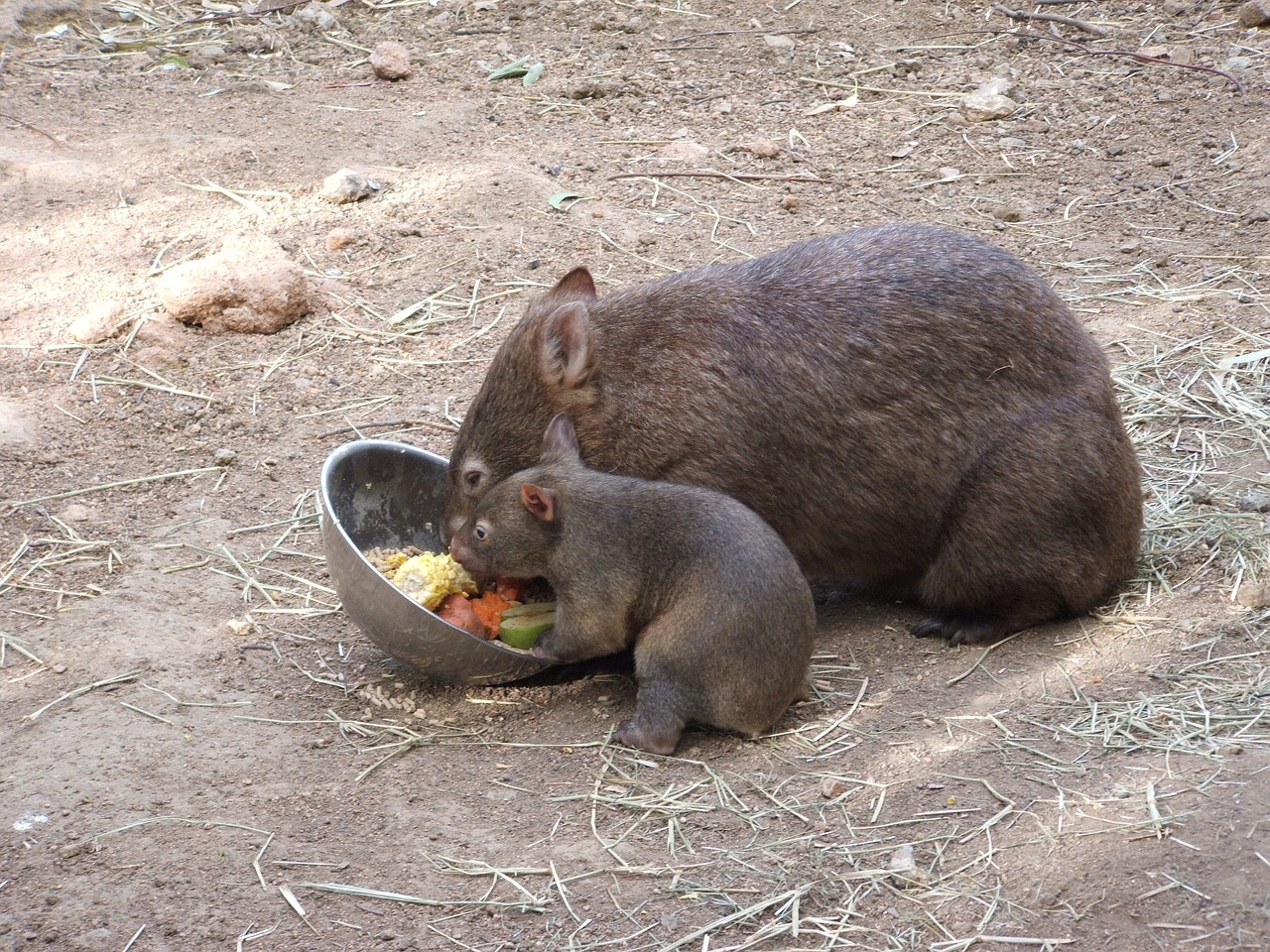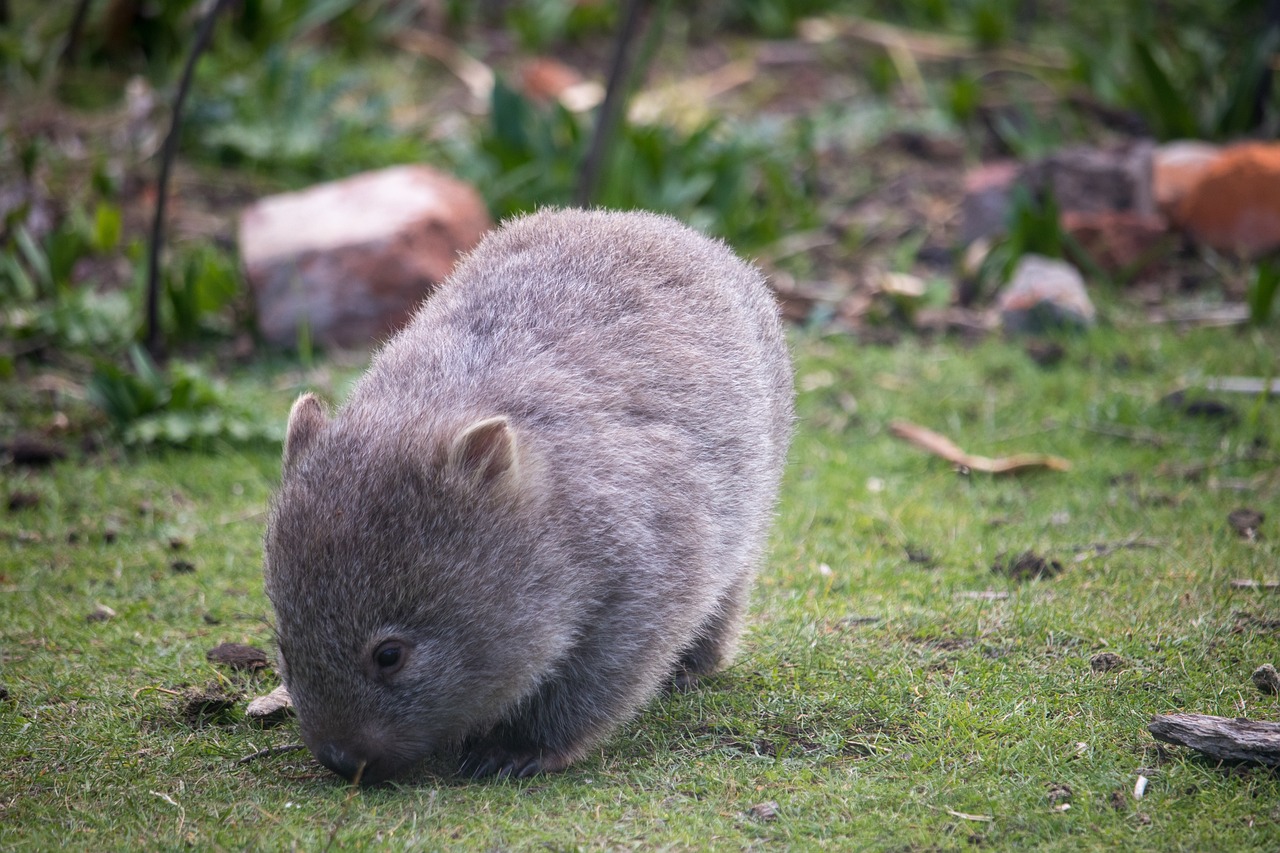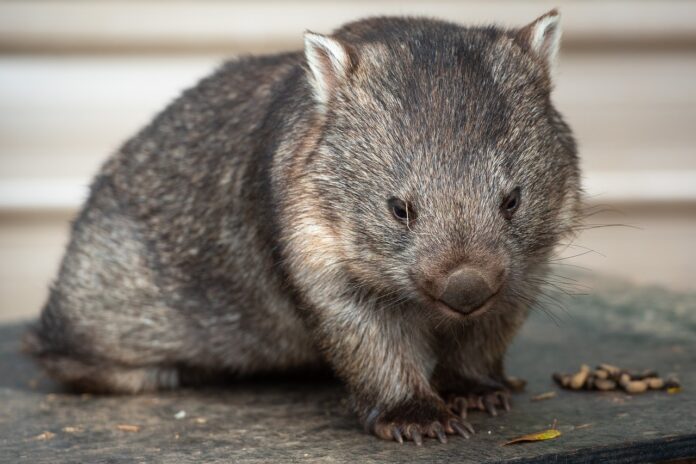Wombats are small Australian creatures that resemble little bears. They prefer a nocturnal lifestyle, hiding in underground burrows during the day.
General Description
Wombats are herbivores, feeding on plant roots, fruits, and berries. They have short, strong legs that allow them to dig deep burrows, which can reach lengths of up to 30 meters. These burrows are so spacious that even a person can easily fit inside.
Wombats have a pouch on their bellies where they carry their young. They have large heads and small eyes.
Wombats have poor eyesight but possess an excellent sense of smell. During the day, they sleep in their underground “homes” and come out at night to hunt. It is rare to see a wombat on the surface during the day; they occasionally emerge to bask in the sun.
Scientists believe that wombats appeared on our planet about 18 million years ago. Only five relatively small species have survived to this day. However, there are fossil specimens that weighed around 200 kilograms.
The closest relatives of wombats are koalas. They share similarities in body structure and reproduction.
Species
The Northern or Broad-faced Wombat is the largest species, reaching a length of up to 140 centimeters and weighing 40 kilograms. It has a flattened forehead, pointed ears, and dark, short fur.
The Hairy-nosed Wombat is found in eucalyptus forests. It is about one meter long and weighs around 35 kilograms. Its fur is long, soft, and dark brown, with white patches on its belly and above its eyes. The Hairy-nosed Wombat includes two species: the Queensland and Long-haired Wombats. The Queensland Wombat is endangered, with only 118 individuals remaining, all inhabiting a small reserve in Queensland.
Interesting Facts
The Australian fauna is truly amazing. Here are some interesting facts about one of its representatives—the wombat:
- Wombats are slow, but if threatened, they can reach speeds of up to 60 kilometers per hour.
- Wombats never gather in groups. However, the burrows of “relatives” may be located close to each other. Pairs of wombats form only during the breeding season.
- Wombats mark their territory with their droppings, which are shaped like cubes. An animal produces about a hundred of these “cubes” in a day.
- They do not require a large amount of food. Wombats digest their meals over two weeks due to their slow metabolism.
- Wombats need very little water, drinking only 25 milliliters per kilogram of body weight per day.
- Sometimes, during burrow construction, an unfortunate incident occurs when the tunnel of one wombat intersects with another’s. Interestingly, in this case, the animals use the shared “section” alternately, trying not to encounter each other.
- The first mention of wombats dates back to 1797 when a ship from Europe wrecked off the Australian coast. The crew came ashore and saw unusual creatures that resembled giant hamsters.
- Wombats are not afraid of humans, which has played a cruel joke on them: the animals were nearly exterminated by hunters.
- Wombats are the largest mammals that dig burrows and live underground.
- Their bodies are equipped with a dense rear shield, which they use to defend themselves from predators. If a wild dingo enters a wombat’s burrow, it can suffocate the dog by pressing it against the wall with the shield. Wombats also have sharp, long claws as another form of defense.
- Thanks to wombats, Australians discovered significant copper deposits. People noticed that the soil dug up by the animals contained specks of yellow metal.
- When faced with danger, a wombat can deliver strong headbutts.
- Females reach sexual maturity at three years, while males can reproduce at two years. The pregnancy lasts only three weeks, but after the baby is born, the mother carries it in her pouch for another nine months. Interestingly, the pouch entrance is located on the back, protecting the baby from dirt while the mother digs. Wombats are very caring mothers, and even when the young one can leave the pouch, the mother always keeps it in sight. Young wombats live with their mothers until they are one year old.
Can Wombats Be Pets?
The main enemy of wombats is humans. They are hunted for their meat, and many fall victim to vehicle collisions. To prevent animal deaths, special signs that are visible at night are placed along the roads in wombat habitats.
Interestingly, wombats can be domesticated. In Australia, these animals often become beloved pets. They love affection, are eager to interact, and are smart enough to be trained. However, keeping them at home can be dangerous. Wombats are extremely skittish, and if they sense danger, they may become aggressive. Such an unusual pet must be handled very delicately, without giving it a reason to be frightened.
In the wild, wombats live for 10-15 years, but in captivity, they can live up to 25 years. The longevity record is held by a wombat that lived for 34 years.
It is forbidden to export wombats from Australia. Only large zoos can acquire them. A wombat baby can cost around $1,000.
Wombats are amazing animals: the largest burrowing mammals, carrying their young in pouches, and marking their territory with cube-shaped droppings. Humans nearly exterminated wombats, but fortunately, their population has been preserved.
